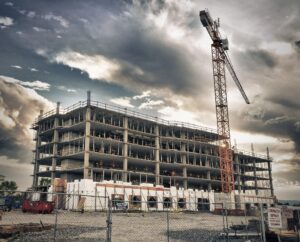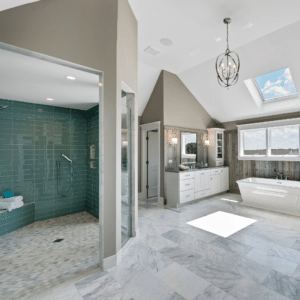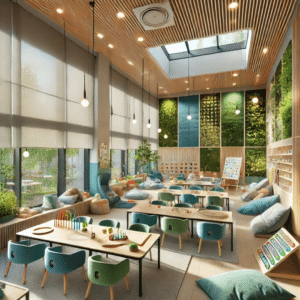Encouraging employees to come back to the office is crucial for fostering collaboration and boosting team dynamics. By integrating specific architectural elements, employers can create a workplace appeal that not only promotes productivity but also enhances employee well-being.
To entice employees back to the office, employers can leverage architectural strategies to enhance workplace appeal. By incorporating elements such as flexible collaborative spaces, wellness facilities, and aesthetically pleasing designs, companies can create an environment that fosters creativity, promotes social interaction, and prioritizes employee well-being.
Creating Flexible and Collaborative Spaces
Flexible and collaborative spaces within the office are essential for fostering collaboration and innovation among employees. One effective approach is to incorporate open-plan layouts that facilitate communication and idea-sharing. By removing physical barriers such as cubicle walls, employees are encouraged to interact and collaborate more freely, leading to increased creativity and a sense of camaraderie. Pixar is a notable example of a company that has successfully implemented an open-office design. Their headquarters in Emeryville, California, features a layout that promotes collaboration and creativity.
In addition to open layouts, incorporating flexible furniture and multifunctional spaces is crucial. Modular furniture that can be easily rearranged enables employees to adapt the workspace to their specific needs and encourages collaboration on different types of projects. Multi-purpose areas, such as breakout rooms or collaborative zones equipped with whiteboards or brainstorming tools, provide designated spaces for team collaboration and idea exchange.
However, it’s important to strike a balance between open collaboration and the need for privacy or quiet concentration. To address this, companies can create designated quiet zones or private meeting rooms where employees can retreat when they require focused work or confidential discussions.
Prioritizing Employee Well-being and Work-Life Balance
Prioritizing employee well-being and work-life balance in workplace design is crucial for creating a positive and supportive environment. One effective approach is to incorporate wellness facilities and amenities that promote physical and mental well-being. Companies like Patagonia have embraced this philosophy and have become shining examples of designing offices that prioritize employee well-being.
Wellness facilities can include fitness centers, yoga or meditation rooms, and spaces for relaxation or quiet reflection. These amenities provide employees with opportunities to engage in activities that promote physical fitness, stress reduction, and overall well-being.
Access to natural light is another vital aspect of workplace design that significantly impacts employee well-being. Introducing ample windows and skylights allows natural light to flood the workspace, creating a more pleasant and energizing atmosphere. Exposure to natural light has been linked to improved mood, increased productivity, and better sleep patterns. Additionally, incorporating greenery and indoor plants within the office space can improve air quality, reduce stress, and enhance cognitive function.
Ergonomic furniture is also essential for employee well-being. Providing comfortable and adjustable workstations, ergonomic chairs, and proper keyboard and mouse placement can help prevent musculoskeletal disorders and promote good posture.
When employees feel that their well-being is valued and supported, they are more likely to be engaged, motivated, and satisfied with their work. Prioritizing employee well-being and work-life balance not only enhances the individual employee experience but also contributes to overall organizational success and productivity.
Enhancing Technology and Connectivity
Enhancing technology and connectivity in the workplace is crucial for maximizing productivity in the digital age. By incorporating advanced technology infrastructure, companies enable seamless communication and efficient collaboration among employees. Smart office solutions like Microsoft Teams and collaborative tools such as Slack streamline workflows and enhance connectivity. Video conferencing platforms foster effective remote collaboration, and efficient digital systems enable easy access to information. Embracing technology empowers employees to work efficiently, regardless of their physical location, and ensures a connected and productive workforce.
Incorporating Biophilic Design Elements to Boost Workplace Appeal
Incorporating biophilic design elements in the workplace has significant benefits for employee well-being and productivity. By bringing nature indoors through the use of plants, living walls, and natural materials, companies can create a workspace that is not only aesthetically pleasing but also promotes a sense of tranquility and connection to the outdoors.
Plants have been shown to improve air quality, reduce stress levels, and increase productivity. Integrating greenery throughout the office space can create a refreshing and calming environment. Living walls, which are vertical gardens featuring a variety of plants, add a striking visual element while contributing to improved air quality and a connection to nature.
The use of natural materials, such as wood, stone, or bamboo, in the design of furniture, flooring, and finishes, adds warmth and authenticity to the workspace. These materials evoke a sense of nature and contribute to a more inviting and comfortable atmosphere.
An inspiring example of biophilic design is Amazon’s Spheres, located in Seattle. These spherical glass structures house a diverse range of plant species, creating a lush and immersive environment for employees. The Spheres provide a unique space for employees to relax, recharge, and find inspiration, enhancing their well-being and creativity.
Embracing Sustainable and Eco-Friendly Practices
Embracing sustainable and eco-friendly practices in workplace design is essential for demonstrating environmental responsibility and creating a healthier, greener workspace. By prioritizing sustainability, companies can contribute to a more sustainable future while also reaping numerous benefits for their employees and the environment.
Designing energy-efficient buildings is a fundamental aspect of sustainable workplace design. Incorporating features such as efficient insulation, LED lighting, and smart heating and cooling systems reduces energy consumption and lowers carbon footprint. Utilizing renewable energy sources, such as solar panels or wind turbines, further enhances sustainability and reduces reliance on fossil fuels.
The Bullitt Center, located in Seattle, stands as a prime example of sustainable architecture. This innovative building is designed to generate its own renewable energy, treat its wastewater on-site, and incorporate natural ventilation and lighting systems. The Bullitt Center showcases how sustainable design can create a healthier and more eco-friendly workspace while providing a comfortable and productive environment for employees.
Implementing recycling programs and waste management systems is another important aspect of sustainable workplace practices. By encouraging employees to recycle and providing easily accessible recycling stations, companies can significantly reduce their environmental impact. Obtaining green certifications, such as LEED (Leadership in Energy and Environmental Design), further demonstrates a commitment to sustainable practices and provides third-party recognition of a company’s environmental efforts.
In addition to building design and waste management, environmentally conscious practices can be integrated into everyday operations. Encouraging employees to adopt sustainable habits, such as using reusable water bottles or implementing paperless workflows, contributes to greener workplace culture.
How can office design impact employee creativity and innovation?
Office design plays a crucial role in influencing employee productivity. A well-designed office can create a conducive environment that fosters focus, collaboration, and creativity. Factors such as natural light, comfortable workstations, and ergonomic furniture contribute to physical comfort and reduce distractions. Incorporating spaces for collaboration and brainstorming, as well as quiet areas for concentration, helps employees work more efficiently. By considering employee needs and providing a thoughtfully designed workspace, employers can significantly enhance productivity levels.
The future of work lies in creating environments that support employee engagement, foster innovation, and promote well-being. Employers can boost workplace appeal and create an environment that entices employees to return to the office with these strategies. Contact the experts in Guzzo Architects at 201-939-1446 to help you incorporate these strategies to your office.








